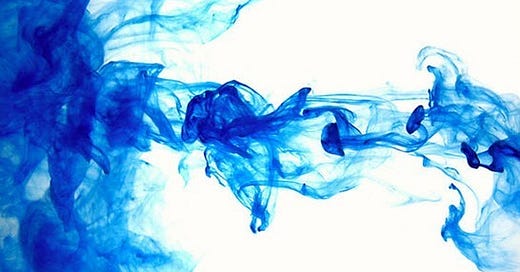You may have come across Methylene Blue (MB) before; it’s that deep-blue dye used to stain cells and tissues for viewing under a microscope, or to treat aquarium fish for parasites. But what does it have to do with my interest in health?
Previously, I had no idea that this compound – developed as an industrial dye in 1876 – was the first synthetic drug used in medicine. But recently I came across an editorial in the Orthomolecular Medicine News Service by Dr Thomas Levy, which alerted me to the healing potential of this compound, and now I’m fascinated. It’s important to note though that the industrial dye contains contaminants and that MB as a medicine must be pharmaceutical or ‘food’ grade!
Some of Methylene Blue’s super-powers
Dr Levy writes of MB that “its documented beneficial health effects rival that of any other known substance, whether normally found in nature or coming out of a laboratory.”
MB was used as a highly effective anti-malarial agent in the 1890s. It lost out to quinine at the time, but now it’s coming into its own as a treatment for drug-resistant malaria.
MB has a special affinity for the nervous system. From the late 19th century, for about 50 years it was used as an antipsychotic medication; it has also been used to treat depression, memory problems, and other neurological conditions. With rates of dementia increasing around the world, and pharmaceutical solutions remaining elusive, MB could offer hope to the millions affected by neurodegenerative conditions like Alzheimer’s and Parkinson’s.
Amazingly, MB is an antidote to cyanide poisoning. Recently it has also been shown to protect against brain damage following carbon monoxide poisoning.
It treats a wide range of infections, including serious ones like septic shock.
It is active against many pathogens and was effective in treating acute respiratory distress syndrome (ARDS) and abnormally low blood oxygen levels caused by Covid-19.
And MB is a first-line therapy for methemoglobinemia, a condition in which the oxygen-carrying capacity of the blood is critically depleted.
How does MB treat such diverse conditions?
We’ve probably all heard the term ‘oxidative stress’ and know that for some reason it’s not a good thing. Essentially, the body experiences oxidative stress when there is an imbalance between free radicals[1] and antioxidants[2]. This can cause damage to cells, resulting in inflammation, ageing, and disease.
Like vitamin C, MB is a powerful antioxidant that is able to both receive and donate electrons. It has the unique ability to enable the mitochondria (the cells’ energy factories) to produce energy much more efficiently than normal, while producing less oxidative stress in the process.
MB can thus enhance metabolism at the same time as enabling healing to proceed. And because MB is a small molecule, it can easily reach all parts of the body, allowing these benefits to be felt wherever they are needed. After more than a century of clinical use, it’s also been shown to have an excellent safety profile.
There is hope!
With many of us feeling under siege from countless threats to our health, isn’t it wonderful to come across a molecule, manufactured so many years ago, that feels like it was designed for our time! By dampening down oxidative stress, and enhancing energy generation, experts like Dr Levy show that Methylene Blue can support the miraculous ability of our bodies to heal when given the chance.
I hope you’re now as curious as I am to find out more! We shall come back to this topic, but in the meantime, please dive into Dr Levy’s informative article. And enjoy the video of Dr Joseph Mercola’s interview with MB expert Dr Francisco Gonzalez-Lima embedded in this article.
Please note: This is for information only and is not medical advice. Please make sure you consult a trusted health professional before taking any medicines discussed in these articles.
Value exchange
If you find value in these articles and podcasts, please consider becoming a paid subscriber. All proceeds go towards the humanitarian work of the World Council for Health.
Thank you for your support!
[1] Free radicals are atoms (often oxygen) that have an unpaired electron, which makes them unstable. They are able to react with other atoms or molecules; this process is called oxidation.
[2] Antioxidants are molecules that can donate an electron to a free radical without themselves becoming unstable. This stabilises the free radical and makes it less reactive.




🎯❤️great article , thank you Tess . We used it at a hospital I trained at for years. About 15 years ago , I asked for some while removing a fistula in the operating room . The methylene blue got locked up and the pharmacist asked why I needed it. Never ever been asked why before . I got very suspicious and read about all its natural wonders back then ! Thank you Dr. Tess Lawrie . ❤️
Hi Tess
I ordered some a couple of day ago after reading The Ultimate Guide To Methylene Blue by Mark Sloan. An amazing book and complete eye opener for me.
The MB arrives next week and I can wait to see the results,
Many blessings
Jake